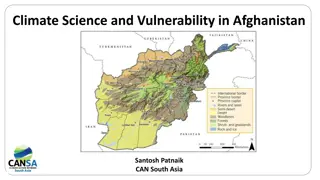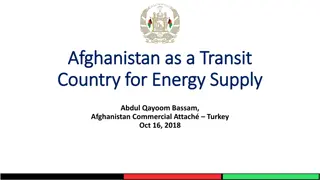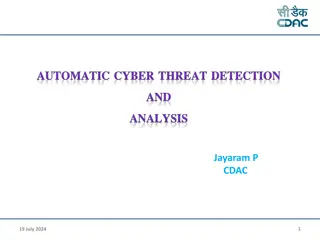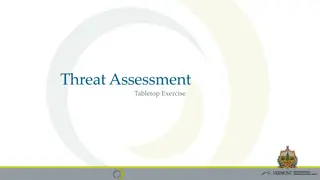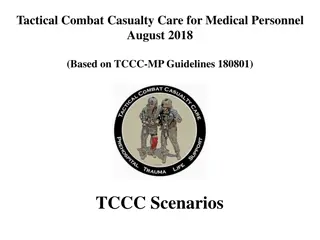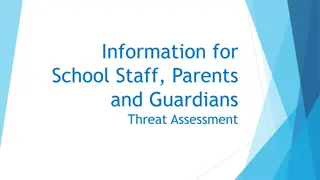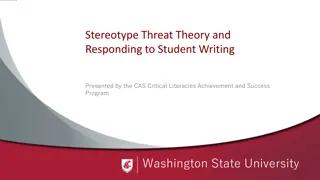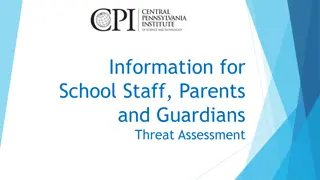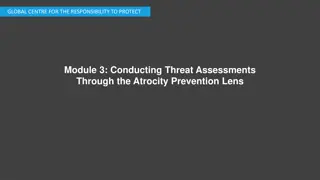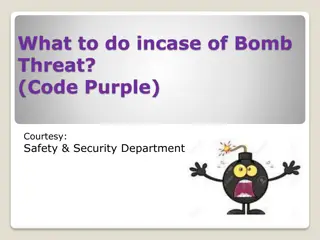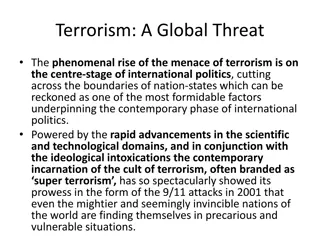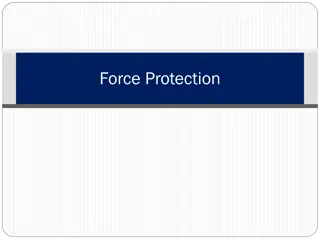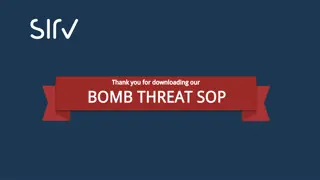Salafi Jihadi Threat from Afghanistan: Key Insights
The Salafi Jihadi groups in Afghanistan, including Al Qaeda Core and ISIS-K, pose a growing threat to U.S. security interests. These groups share the goal of establishing a global Caliphate through violent means. Al Qaeda Core is particularly focused on targeting the U.S. and aims to rebuild its capacity in Afghanistan, viewing it as central to their long-term goal. Understanding the common ideologies and strategies of these groups is crucial in assessing the risks they pose.
Download Presentation

Please find below an Image/Link to download the presentation.
The content on the website is provided AS IS for your information and personal use only. It may not be sold, licensed, or shared on other websites without obtaining consent from the author. Download presentation by click this link. If you encounter any issues during the download, it is possible that the publisher has removed the file from their server.
E N D
Presentation Transcript
The Salafi Jihadi Threat to the US from Afghanistan Karl Kaltenthaler University of Akron/Case Western Reserve University Prepared for SMA Reachback Cell
Key Judgements Al Qaeda Core (AQC), Al Qaeda in the Indian Subcontinent (AQIS), and ISIS-Khorasan Province (ISIS- K) are growing threats to U.S. security interests . AQC is the greatest potential threat to the U.S. homeland emanating from Afghanistan. As the control of the Afghan government (GoIRA) over territory diminishes, the threat from these groups to U.S. security interests increases. A Taliban military victory would pose a very significant step in re-building the capacity of AQC, in particular. This would pose a very substantial threat to U.S. security.
Salafi Jihadi Groups in Afghanistan Afghanistan has become a base of operations to several Salafi Jihadi groups outside of the home-grown Taliban. Al Qaeda Core (AQC) Al Qaeda in the Indian Subcontinent (AQIS) ISIS Khorasan Province (ISIS-K) Islamic Movement of Uzbekistan (IMU) Turkistan Islamic Party (TIP) Pakistani Taliban (TTP)
What Salafi Jihadis Share in Common All of the Salafi Jihadis in Afghanistan share the goal of creating a global Caliphate under a very austere, and punitive interpretation of sharia. Salafi: Create an Islamic state based on the model of the Prophet Mohammed and the first four caliphs (as they interpret it). Jihadi: Violent struggle will be central to creating such an Islamic state. There is much divergence over the strategy and tactics to get to the Caliphate and what the short-term goals should be.
Al Qaeda Core The leadership core of the global Al Qaeda movement. A network around AQ emir Ayman al-Zawahiri. Estimated to have several hundred to a few thousand members in Afghanistan. In an intentional re-building phase to regain capacity to attack the U.S.. Trying re-build the Al Qaeda brand as a more palatable form of Salafi Jihadi movement. Attempting shed image of brutality and extremism.
Al Qaeda Core Focus is primarily on the Far Enemy , the U.S., and not the Near Enemy, i.e., attacking Muslim states to create Islamic states. Al Qaeda leadership has recently emphasized the glocal character of the movement. The Caliphate can be created after Muslims rally to the Al Qaeda cause and the U.S. withdraws from the Islamic world. Afghanistan is viewed as center of the eventual Caliphate. The Caliphate depends on Taliban victory. The Caliphate is viewed as a long-term goal.
AQIS AQIS was created in 2014 by al-Zawahiri. It is a manifestation of the glocal strategy of Al Qaeda. Was an attempt to create a local South Asian branch of Al Qaeda. Was created out of pre-existing Salafi Jihadi networks in South Asia allied to Al Qaeda. AQIS shares AQC s long-term goals but its immediate strategy is to aid the Taliban victory in Afghanistan and hit high visibility targets in India, Pakistan, and Bangladesh.
AQIS AQIS has not developed into a formidable terrorist group. Has a few hundred members and limited operational capacity. It has not attracted recruits the way it was envisioned. It has also been severely hampered by U.S. and regional state counter-terrorist operations.
ISIS-K The Islamic State in Khorasan is a province of the Islamic State. Views itself as part of the IS Caliphate. Created in January 2015. Consists mostly of ex-Pakistani Taliban members who pledged loyalty to Abu Bakr al Baghdadi at the peak of ISIS power. Its ranks now include Arabs and Central Asians who have left Syria. Afghans and other nationalities have joined too. Has between 3,000 and 4,000 fighters.
ISIS-K Its area of primary operations is Nangarhar Province in Afghanistan although it is present in other areas of the country. Despite shallow local roots, it has been a very violent and dangerous group. Targeted Shia, Taliban, GoIRA forces, Afghan civilians, coalition forces, and targets in neighboring countries. It has substantial capacity to do harm with its attacks.
ISIS-K Its long-term goals align with ISIS leadership but its immediate goal is to establish an ISIS province in Afghanistan. It is now one of the most, if not the most, formidable branchof ISIS. It has a great capacity for resilience despite concerted coalition efforts to destroy it. It continues to attract funds and manpower.
Other Salafi Jihadi Groups -Central Asian Salafi Jihadi group. -Most of it is aligned with ISIS. -It is regionally-focused. -A few hundred members. -Proven to be a capable guerilla and terrorist group. Turkistan Islamic Party (TIP) aka East Turkestan Islamic Movement (ETIM) -Uighur Salafi Jihadi group focused on creating an Islamic state in China. -Aligned with Al Qaeda. -A few hundred members. -In Afghanistan, focuses primarily on survival. Islamic Movement of Uzbekistan (IMU)
Other Salafi Jihadi Groups Pakistani Taliban (Tehrik-e-Taliban Pakistan) Created in Pakistan in the tribal areas in 2007. Response to Pakistani alliance with U.S. against Al Qaeda and Pakistani extremists. Allied with Al Qaeda. Goal has been to create an Islamic state in Pakistan. Has re-located into Afghanistan following Pakistani army operations against it in 2014. Has been quite weakened by splits and defections. Still several thousand members strong.
Links to the Taliban All of the aforementioned groups have links to the Taliban, save for ISIS-K. All of the Al Qaeda-linked groups swear allegiance to the leader of the Taliban, Mullah Haibatullah Akhundzada. Not only are there oaths of fealty, there is very meaningful operational cooperation between Al Qaeda and the Taliban. The strongest ties are between Al Qaeda and the Haqqani Network portion of the Taliban. They share long historical ties and ideological closeness.
Links to the Taliban There is every reason to believe that the Taliban and Al Qaeda will not abandon each other. Threats and leverage against the Taliban will not get them to abandon or even meaningfully constrain Al Qaeda. The ideological ties between Al Qaeda and the Taliban are stronger now than under Mullah Omar or other emirs of the Taliban. The stronger position of the Al Qaeda-aligned Haqqani Network in the Taliban leadership also reinforces the relationship.
The Iran-Afghanistan Nexus Both Al Qaeda and ISIS view Afghanistan as central to their future. Both are moving fighters from Syria into Afghanistan. For Al Qaeda, its ability to operate command and control, logistics, and secure training in Iran and Afghanistan are crucial to its re-birth. Iran s cooperation with Al Qaeda makes it much easier for the group to re-build and grow more threatening to U.S. interests. AQC now moves between Iran and Afghanistan as needed.
The Trajectory of Security in Afghanistan As Afghan security forces continue to lose territory to the Taliban or other non-government- aligned elements, this heightens the power of Al Qaeda and ISIS-K. These violent extremist groups have more room to build and grow in ungoverned spaces or in Taliban-governed spaces (in the case of Al Qaeda). This situation means a heightened threat to U.S. interests in the region, globally, and in the homeland.
What Would a Taliban Victory Mean? A Taliban victory would mean a victory for Al Qaeda s strategic vision. It remains to be seen if the Taliban can vanquish ISIS-K. It would be a victory for Al Qaeda in that it would once again give Al Qaeda a base for attacks on its chosen targets, including the U.S.. We already see Al Qaeda training camps in Afghanistan. Those would definitely grow in number and quality.
What Would a Taliban Victory Mean? It is nearly certain that Afghanistan would once again become a magnet for Salafi Jihadis looking for training and sanctuary. This could be both threatening to the U.S. and regional stability. It would allow groups with particular country or regional agendas, such as the TTP, IMU, and the TIP to operate more easily.
U.S. Options in Afghanistan and in the Region It is highly unlikely that the U.S. could create a bargain with the Taliban to prevent a resurgence of a dangerous Al Qaeda presence in Afghanistan. Pashtunwali and Taliban ideology would make this nearly impossible. Over-the-horizon counterterrorism options would also be very difficult. Given the state of the region, it is not feasible for U.S. forces to easily strike Al Qaeda or ISIS targets in Afghanistan from bases close-by.
U.S. Options in Afghanistan and in the Region A Taliban victory in Afghanistan would be a direct and real threat to the national security of the United State because of the presence of Al Qaeda operations in the country. Thus, trying to separate the issues of the Taliban and Al Qaeda is not a realistic exercise. U.S. policy should recognize them as symbiotic organizations.




